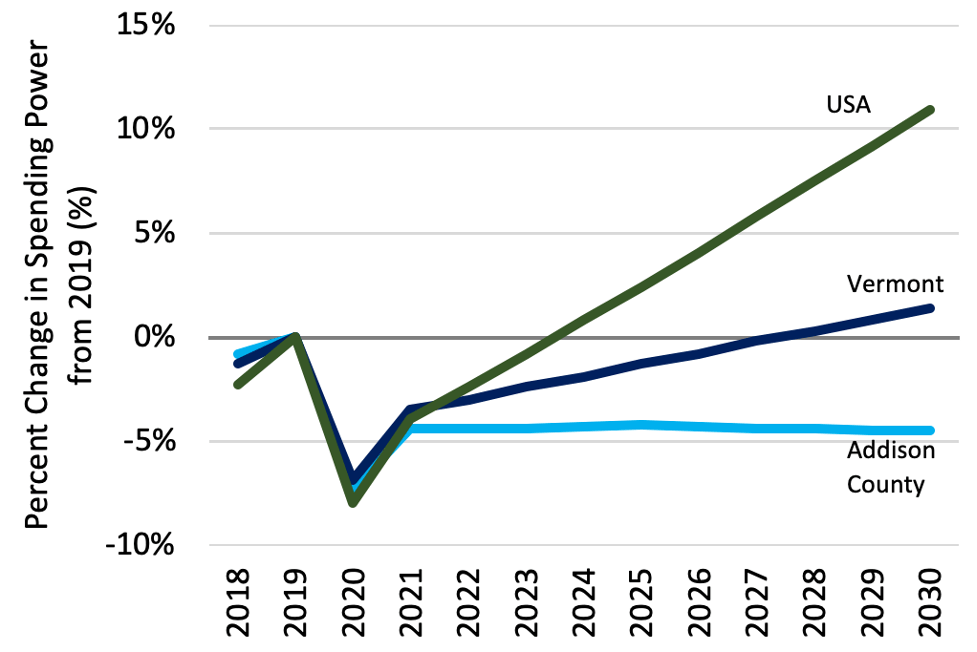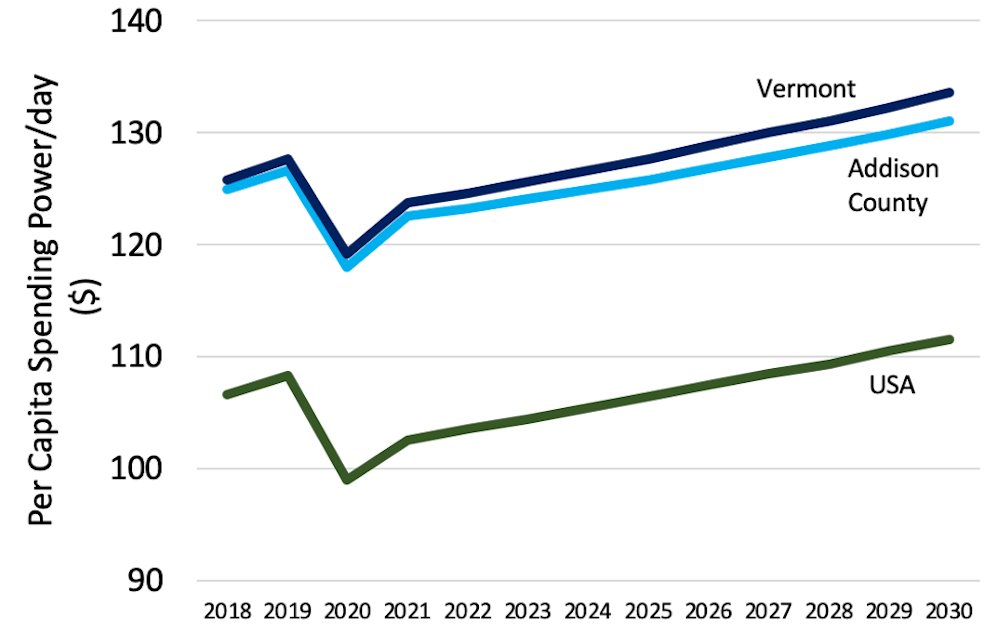Addison County could see a population decline of up to 7% as well as a stagnating economy over the next decade, according to World Data Lab projections. These declines can be attributed to gaps in housing, childcare services and employment opportunities, according to state representative Robin Scheu (D-Middlebury) and Professor of Economics Paul Sommers.
Scheu believes that housing is a primary contributing factor. Rep. Scheu moved to the county 28 years ago with her family and has been in Middlebury ever since. “Starter homes for starter jobs are many of the homes we need,” Scheu said, and starter homes are hard to find in Addison County.
Scheu spent nine years as Executive Director of the Addison County Economic Development Corporation before representing Addison County in the Vermont General Assembly. During her time with the corporation, she found that people were able to find work in Addison County but unable to find homes.
“They ended up not taking the job that they were offered because they couldn’t find a place to live that met their needs for their family,” Scheu said.
Median house prices have been rising in Addison County and are among the most expensive in Vermont, which could indicate that it may be difficult to find starter homes. However, such a significant decline in population is unlikely to be caused by housing alone.
Scheu also points to a lack of childcare in Addison County as a possible reason for population decline. Addison County is projected to see a decline in families in the next 10 years, with forecasts suggesting that adults aged 30–65 is the demographic that will see the largest population decline.
“As a working family, you don’t only want to have [quality] education … childcare is a really big thing,” Scheu said.

Other economic trends could also play a role in demographic shifts. Professor of Economics Paul Sommers associated the decline in the workforce demographic to decreased employment opportunities in Addison County. The workforce is projected to decline from 64% of the population in Addison County to 58% by 2030.
Per capita spending in Addison County is also projected to fall behind the state’s in the next decade, although it had tracked the state’s closely before the pandemic. After a slight recovery in 2021, Addison County’s spending power will remain around 4.5% lower than it was in 2019, while Vermont spending power is expected to be around 2% higher than 2019 levels. But the news isn’t all bleak. In fact, the pandemic has resulted in a wave of immigration into Vermont, according to University of Vermont researchers. A third of survey respondents — many of whose jobs have been moved online — also said that they plan to stay in the state after the pandemic. In catalyzing a shift to remote work, the pandemic may have also created new opportunities for a state grappling with its issue of population decline.

Addison County’s search for solutions to population decline

Projections of the daily amount of money spent per person in Addison County, Vermont, and the USA over the next decade. Source: World Data Lab. (Marco Fengler)
Projections of the daily amount of money spent per person in Addison County, Vermont, and the USA over the next decade. Source: World Data Lab. (Marco Fengler)
Comments



